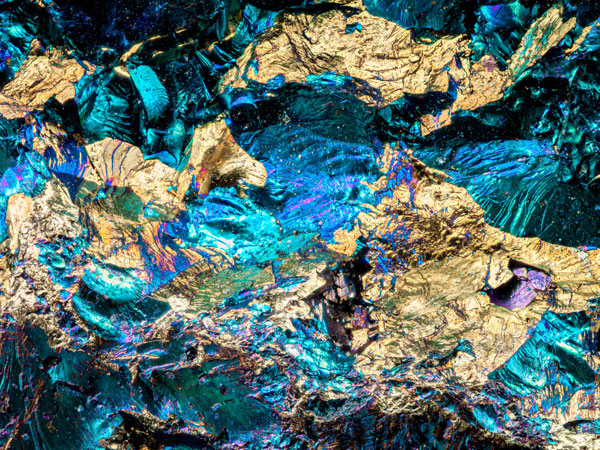Earth’s Minerals: Their Origins, Properties, and Uses
Minerals are an essential part of our world and our daily lives. They are the building blocks of our materials and technologies, from the glass in our windows to the silicon in our smartphones. In this article, we’ll explore the fascinating world of Earth’s minerals, from their origins in the earth’s crust to their many uses in industry, technology, and everyday life.
Origins of Earth’s Minerals
Minerals are naturally occurring, inorganic substances formed through geological processes over millions of years. They are found in rocks, soils, and sediments worldwide and are essential for the growth and development of all living things.
The process of mineral formation begins with the cooling and solidification of magma and lava, which creates igneous rocks. These rocks can contain valuable minerals such as gold, copper, and silver. Sedimentary rocks are formed when minerals are deposited over time and can contain minerals such as limestone and coal. Finally, metamorphic rocks are formed when other rocks are exposed to heat and pressure and can contain minerals such as marble and slate.
Humans have been mining minerals for thousands of years, and our demand for these resources has only increased over time. Today, mining is a major industry that provides the raw materials for many of the products and technologies we use daily.
Properties of Earth’s Minerals
Minerals are naturally occurring inorganic substances with a crystalline structure and a specific chemical composition. They are distinct from rocks, which are made up of a combination of minerals and other materials. Minerals have unique physical and chemical properties that are used to identify and classify them.
The physical properties of minerals include color, luster, hardness, cleavage, and fracture. For example, quartz is a hard mineral with a glassy luster that breaks in a conchoidal pattern. The chemical properties of minerals are determined by their atomic structure and the types of chemical bonds that hold their atoms together.
Classification of Earth’s Minerals
There are over 4,000 known minerals on Earth, but they can be broadly classified into a few main groups based on their chemical composition and crystal structure. The most common group of minerals is the silicates, which comprise over 90% of the Earth’s crust. Silicates comprise silicon and oxygen atoms, including minerals such as quartz, feldspar, and mica. Other important groups of minerals include carbonates, which contain carbon and oxygen, and sulfates, which contain sulfur and oxygen.
Each group of minerals has unique characteristics that make them useful for different purposes. For example, copper is an important mineral in electrical wiring and plumbing. Iron is used to make steel for construction, while gold and silver are used in jewelry and as a store of value. Talc is used in cosmetics for its softness and absorbency, while quartz is used in electronics for its piezoelectric properties.
Uses of Earth’s Minerals
Minerals have various uses in industry, technology, and everyday life. They are used to make everything from toothpaste to aircraft parts. Minerals produce energy, such as coal and uranium, and are critical for renewable energy technologies, such as solar panels and wind turbines. They are used in construction materials, such as cement and bricks, to make glass and ceramics.
In addition to their many practical applications, minerals have long been used for their spiritual and metaphysical properties. Many cultures and spiritual traditions worldwide believe in certain minerals’ healing and transformative powers.
For example, amethyst is a purple variety of quartz often used for its calming and stress-relieving properties. It is also associated with spiritual awareness and intuition. Rose quartz is a pink mineral associated with love and emotional healing. It is often used to attract and enhance relationships and to heal emotional wounds.
Crystals and gemstones are often used in meditation, prayer, and spiritual practices. They are believed to help balance and align the body’s energy centers, or chakras, and to promote spiritual growth and development.
The spiritual uses of minerals are not limited to the New Age movement or alternative medicine. Many indigenous cultures worldwide have long used minerals in their spiritual practices. For example, the Navajo people of North America believe in the healing powers of turquoise, which is sacred to them. The Maori people of New Zealand use greenstone, or jade, in their spiritual and cultural practices.
Conclusion
Earth’s minerals are an essential part of our world and lives, providing the raw materials for many of the products and technologies we use daily. They are also deeply connected to our spiritual and cultural traditions, providing healing and transformative powers. As we look to the future, it is important to find ways to use these resources sustainably and ethically to ensure they are available for future generations. By understanding Earth’s minerals’ origins, properties, and uses, we can appreciate their value and work towards a more harmonious and interconnected relationship with the natural world.
If you want to explore the spiritual and healing properties of minerals, check out the wide selection of crystals and gemstones available at Sacred Ground. Whether you are looking for amethyst for stress relief, rose quartz for emotional healing, or another mineral for its unique properties, Sacred Ground has various options. Visit our website to learn more and find the perfect mineral.

